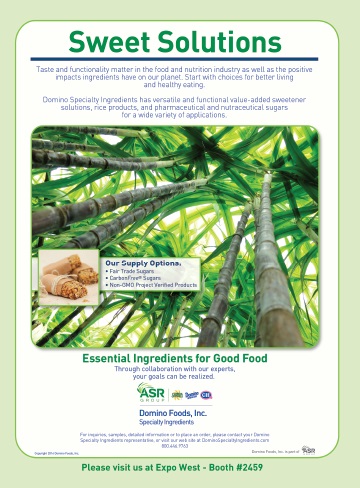Chances are you have fermented products on your shelves, and for good reason, people want them. According to Packaged Facts, 53% of consumers are looking for bold flavors in food and 20% are seeking out international food (1). Consumers are craving the taste of umami, one major flavor profile associated with fermented food particularly that of Asian origin. According to that same report, kimchi has tripled its menu penetration since 2010 and tempeh has bested tofu as a meat alternative from nutritional and texture standpoints.
While many may be chasing flavor, nutrition is highly influential, as the probiotic goodness of fermented food is a major factor driving consumer interest. With so much awareness about the benefits of incorporating probiotics into the diet from articles, studies and the recommendation of health professionals, it is crucial that the marketing of fermented products be on point, especially since the efficacy of food-based probiotics have been called into question.
Dairy
This is particularly true of fermented dairy products such as yogurt and kefir. Now, people are no strangers to yogurt, enjoying its many varieties and flavors for decades. Yogurt is created through the process of fermentation in which lactose, the main sugar in milk, is transformed into lactic acid. However, despite the role of bacteria during fermentation, because of pasteurization, some commercial varieties do not contain probiotic live cultures, from which the benefits are derived (2). Find products that are processed with care.
“Our original goal in 1970 was to make an authentic, fully cultured, probiotic yogurt that was missing from the tiny space allotted to yogurt on the grocery store shelf back then,” says Nancy Hamren, founder of Nancy’s Culture Dairy and Soy, Eugene, OR. By eating probiotic-rich food, one populates the gut with bacteria necessary for the digestive process and contributes to the diversity of gut microbiota (3). This bacteria not only aids digestion, but also functions in a variety of other capacities that positively influence health.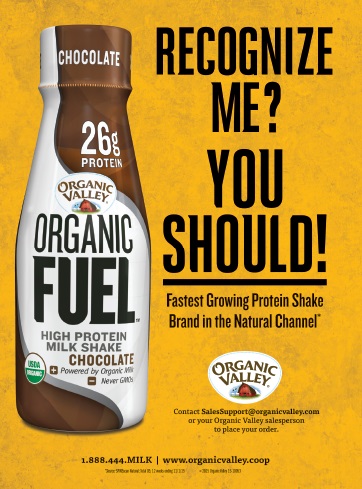
Besides transforming lactose into lactic acid bacteria, fermentation produces other beneficial compounds through the metabolic activity of lactic acid bacteria, such as vitamin B12, folic acid, biotin as well as bioactive peptides that are reported to have antimicrobial, antioxidative and immune-modulatory activities. Minerals such as calcium, magnesium, potassium, phosphorous and zinc are also 50% higher in concentration in yogurt than milk (3). These factors can influence health in many ways by easing constipation, diarrhea and possibly even intestinal inflammatory conditions such as irritable bowel syndrome.
Given the way probiotics affect health, it is no surprise that dairy companies such as Nancy’s Cultured Dairy and Soy, and Lifeway Foods, Morton Grove, IL, actively market their products as having live cultures, even listing them on the product, to let consumers know they are buying the real thing. “Probiotics are not just a marketing strategy for us. We truly believe our strains are very beneficial to human health. They are front and center to what we are all about and we convey that message in every possible way,” says Hamren.
By making it clear that there are live cultures in the product, manufacturers are only making it easier for educated consumers to find what they’re looking for. “With the increased awareness of the microbiome and importance of gut health, we're seeing a lot of first time kefir buyers pick up a bottle because of the probiotic activity,” explains Julie Smolyansky, president and CEO of Lifeway Foods. “The taste is one of the reasons they stay loyal.”
When it comes to taste, flavors are big factor. “We have a very diverse customer base, from life-long drinkers who grew up with the product, to busy millennial parents who did research online and discovered Lifeway ProBugs for their kids,” explains Smolyansky. This is significant in that these companies are providing a cultural staple and a health drink that tastes good, even to kids. Flavors bridge that gap and expose children, who will become future consumers, to the product.
Kefir in particular has really grown in popularity. Sales of Lifeway’s kefir have increased to $130 million in 2014, up from $58 million in 2009 (4). According to Euromonitor, the sour milk segment—made up of buttermilk and kefir—grew 8% in 2014, of which buttermilk sales remained flat, meaning that kefir was responsible for the growth (4). Cultured buttermilk is also rich in probiotics, but unlike kefir, is more widely associated with cooking or baking and therefore not marketed as being rich in probiotics.
Another cultured dairy product that’s on the rise is quark, though most may know it as farmer’s cheese. This soft cheese is used for both sweet and savory applications often sold in tubs or bricks. However, given the craze for protein rich Greek yogurt, other companies are altering the consistency and packaging quark to more resemble yogurt and releasing it as the healthier, more protein-rich alternative. One variety boast 13.6 g of protein per 100 g with only 0.2 g of fat and 0.04 g of salt, compared to a Greek yogurt that contains 8.2 g of protein per 100 g (5).
“We’re seeing increased awareness and demand,” says Smolyansky. “Our Farmer’s Cheese, which was a niche product for many years, has very recently experienced strong organic growth with very little marketing support.” With multinationals like PepsiCo Inc. and Groupe Danone purchasing leading Russian quark brands Domik v Derevne and Prostokvashino in 2011 and 2010 respectively, quark will continue to grow and challenge its more established counterparts (5).
Kombucha
The tradition of kombucha is perhaps even older than that of kefir, such that its true origin is not quite known, though it has a deep-seated place in East Asian culture, particularly in China, Korea and Japan, eventually making its way into Russia and Ukraine. Created by fermenting tea with a gelatinous culture called SCOBY (symbiotic culture of bacteria and yeast), this probiotic tea has a serious reputation for being healthy. Though few studies exist to verify claims, people who love kombucha swear by it.
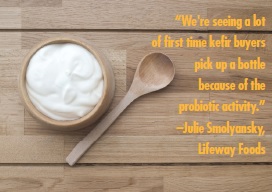
“It is in our nature to want to share this knowledge with our loved ones,” explains a representative for Millennium Products, Inc., Los Angeles, CA, maker of GT’s kombucha. “Word of mouth is the main contributor to the gradual and organic growth of our kombucha.” GT’s has been making its kombucha using the same strain of cultures for the past two decades, keeping the tradition alive and spreading its good word while also updating it through a variety of flavors that makes kombucha palatable for more timid drinkers. It is also practically singlehandedly responsible for the initial popularity and growth of kombucha.
While kombucha has long been made at home, passed down through generations, it has become a huge force in the functional beverage sector. According to SPINS, kombucha saw a 29% growth from February 2013 to February 2014 with total scanned sales amounting to $122.7 million (6). What was once highly niche has become mainstream, with companies actively marketing kombucha as a healthy probiotic drink.
Of the growth, Christopher Reed, CEO, chairman and founder of Reed’s, Los Angeles, CA, says that for a while, private brands like GT’s along with the occasional mom and pop dominated the kombucha market. Once Reed’s threw its hat in the ring, it helped bring more awareness to kombucha and its potential as a big ticket item for other manufacturers. Reed notes that after releasing their Culture Club Kombucha, huge companies like Beverage Venture and PepsiCo Inc. invested in Health-Ade and KeVita respectively. “I think we woke up the entrepreneurial sleeping giant there, at least from a non-mom and pop standpoint,” says Reed.
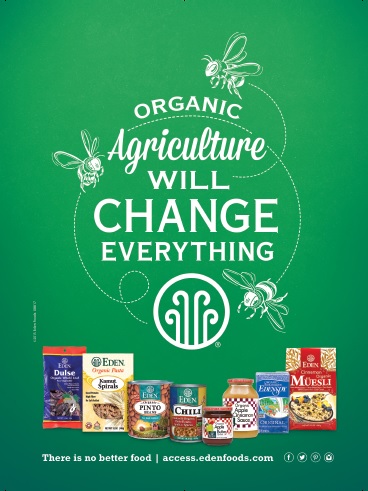 One thing to be aware of with kombucha brands is alcohol content. In its truest form, the fermentation of tea into kombucha creates alcohol (this is also true of kefir). GT’s Classic line of kombucha, for example, might contain more than 0.5% of alcohol and can only be sold to those over 21 years of age. Its other line, Enlightened, however, is formulated to not contain alcohol. Other kombucha brands such as KeVita place a disclaimer on their products to say they contain alcohol, though less than 0.5%, making them legal for purchase by minors.
One thing to be aware of with kombucha brands is alcohol content. In its truest form, the fermentation of tea into kombucha creates alcohol (this is also true of kefir). GT’s Classic line of kombucha, for example, might contain more than 0.5% of alcohol and can only be sold to those over 21 years of age. Its other line, Enlightened, however, is formulated to not contain alcohol. Other kombucha brands such as KeVita place a disclaimer on their products to say they contain alcohol, though less than 0.5%, making them legal for purchase by minors.
Reed’s on the other hand chose to avoid this altogether. “For us, the alcohol was a big deal. As a public company, we’re not comfortable exposing ourselves,” explains Reed. “So we had to solve that problem before we went to market. I think we were the only ones to solve that issue in a way that I consider still consistent with kombucha.”
With regard to its apparent health benefits, Reed need only marvel at the SCOBY to understand that it must be healthy. “You grow your kombucha out in the open, somewhat exposed to the air...because kombucha itself is a very powerful culture that doesn’t really let a lot of the stuff in the air grow…it kind of fends for itself,” explains Reed. “You now have a culture in your gut that has a tendency to fight off bad bacteria and tends to create a really healthy flora.”
In the long term, it doesn’t seem like the popularity of kombucha will wane. “As our culture becomes more aware of the benefits of healthy eating habits, it is our belief that a ‘food revolution’ will occur simply by people making healthier choices,” says GT’s.
Reed echoes this sentiment, “As we see the world turning around here and coming back to natural and healthy…I don’t think the probiotic phenomenon is a fad and fermented is not going away at all…I think they’ll just become more sophisticated.”
Vegetables
While probiotics and health benefits are actively marketed in yogurt, kefir and kombucha, fermented vegetables, such as kimchi and sauerkraut, are approached a bit differently, depending on who you ask. Sunja’s Kimchi, for example, does not put “probiotic” front and center on its product, but does acknowledge that customers are very conscious of the benefits. They also hear from nutritionists all over the country who recommend kimchi and sauerkraut for the probiotic benefits, says Sunja Hayden, president of Sunja’s Oriental Foods, Inc., Waterbury, VT. “Accordingly, we try to keep our customers updated on the benefits of our kimchi products, thus allowing them to make an informed decision,” explains Hayden.
Craig Lewis, vice president of Lewis Mountain Farms, Lewis Mountain, NB, Canada, which makes sauerkraut, believes educating consumers is very important because the science of gut health is still in its infancy. Probiotics, Lewis says, will “play a bigger role in our upcoming marketing plans,” and while “There is a definite trend to greater consumer awareness…there are a lot of fermented food knockoffs, that are pasteurized, that contain preservatives, which neutralize the probiotics, and, in some cases, are simply pickled with vinegar instead of lacto-fermented.”
While such knockoffs offer reduced nutritional value, what it ultimately comes down to for makers of sauerkraut and kimchi is taste. “Our focus in marketing is taste. Fresh taste,” explains Kathryn Lukas, founder and chief innovation officer at Farmhouse Culture, Watsonville, CA. “We think sourcing our organic cabbage by nearby fields year-round and our expertise makes our kraut the best tasting.”
Willow King, CEO and co-founder of Ozuké, Lafayette, CO, which also makes both sauerkraut and kimchi, echoes this sentiment saying, “Our motto is that you shouldn’t have to know if it’s good for you…Taste and texture are paramount to our production and marketing.” That is not to say that they aren’t aware or grateful for the attention their products are getting for their healthfulness.
When Lukas started Farmhouse Culture in 2008, she did so in response to the subpar “canned stuff” and while she knew sauerkraut is a superfood, did not foresee that scientists’ research would “so clearly support the importance of naturally probiotic and fiber rich foods.” This makes customers more informed and deliberate. “The more we learn about the human microbiome, the more we understand the importance of eating live, raw, probiotic foods like kraut and kimchi,” says King.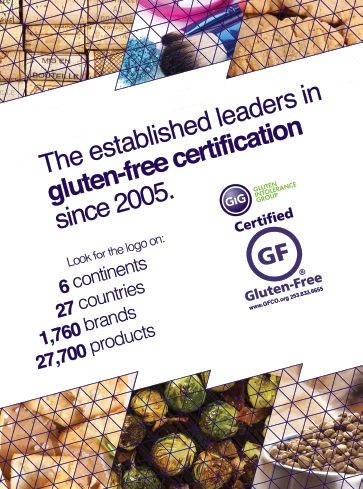
Soy
When it comes to fermented soy products, all of us are familiar with ingredients like soy sauce and miso. While only a fraction of the fermented soy product to come out of Asia, these two are arguably some of the most popular in the United States. Soy sauce and miso, a fermented soy bean paste, are interesting because they exist more as condiments than food. Both high in sodium with soy containing 335 mg/teaspoon and miso containing 630 mg/tablespoon, as well as rich in flavor, they make ideal salt substitutes in food (7, 8). Miso also has the probiotic benefits expected of fermented food, imparting these benefits into the food the paste is a part of.
Tempeh, on the other hand, is a fermented soy product with more utility than soy sauce or miso. Created through a controlled fermentation process that binds whole soybeans into cake form, tempeh is firm in texture and easily takes on the flavors of any dish, making it one of the most ideal meat substitutes. While probiotics are the main draw of other fermented products, tempeh’s protein content is the real selling point.
“Our goal is to help consumers understand that plant-based sources of protein can be complete proteins, meaning there is no difference between the protein that comes from animals and protein that comes from plants,” says Brad Lahrman, director of marketing at Lightlife, Turner Falls, MA. Meat substitutes such as tempeh will only grow in demand as veganism continues its trajectory into the mainstream. Valued at $3.8 billion, the meat substitute market is projected to grow at a compound annual growth rate of 6.4% to $5.17 billion by 2020, according to a report by Research and Markets (9).
Probiotics and the GI Tract
In order to be beneficial, the bacteria in fermented food must first survive the journey through the gastrointestinal tract in which bacteria will be exposed to a highly acidic environment and digestive enzymes. It has been debated whether probiotic bacteria from food is capable of making the trip, but research has shown that it can.
One study evaluated three different commercial yogurts at different quantities on 15 subjects. After 20 days of consumption, the Lactobacillus strains in yogurts A and B consumed at higher quantities than yogurt C with no specified strain, were detected in the subjects’ feces (3). Another study, this time of kimchi, showed that subjects consuming 300 g/day of kimchi has significantly higher fecal counts of Lactobacillus and Leuconostoc species of bacteria (3). WF
Published in WholeFoods Magazine, February 2016
References
1. “Fermented Artisinal Foods: Culinary Trends Tracking Series,” Packaged Facts. http://www.packagedfacts.com/Culinar-Trend-Tracking-8106751/. Accessed December 16, 2015.
2. A. Hawkinson, “Know your nutrients—probiotics: Are all yogurts created equal?” https://riordanclinic.org/2013/01/know-your-nutrients-probiotics-are-all-yogurts-created-equal/. Accessed December 16, 2015.
3. L. Shewell, “Everything you always wanted to know about fermented foods.” Science Based Medicine. https://www.sciencebasedmedicine.org/everything-you-always-wanted-to-know-about-fermented-foods/. Accessed December 16, 2015.
4. A. C. Kaufman, “People are going crazy for a fermented drink no one can pronounce.” http://www.huffingtonpost.com/2015/01/08/kefir-next-greek-yogurt_n_6436992.html. Accessed December 16, 2015.
5. D. Cowland, “Quark: The Ultimate High-Protein Dairy Product?” http://www.nutraceuticalsworld.com/blog/marketwatch/2013-07-08/quark-the-ultimate-high-protein-dairy-product. Accessed December 18, 2015
6. C. Carr, “Kombucha cha-ching: A probiotic tea fizzes up strong growth.” http://www.cnbc.com/2014/08/08/kombucha-cha-ching-a-probiotic-tea-fizzes-up-strong-growth.html. Accessed December 20, 2015.
7. M. Dannie, “What are the Health Benefits of Soy Sauce?” http://www.livestrong.com/article/254144-what-are-the-health-benefits-of-soy-sauce/. Accessed January 4, 2015.
8. E. Riddell, “Is Miso Good for You?” http://www.consumerreports.org/cro/news/2013/05/is-miso-good-for-you/index.htm. Accessed January 4, 2015.
9. “Meat Substitutes Market by Type (tofu & tofu ingredients, tempeh, TVP, quorn, other soy products, seitan, & others), Source (soy-based, wheat-based, mycoprotein, & others), Category (frozen & refrigerated), & by Region - Global Forecast to 2020.” Research and Markets. http://www.researchandmarkets.com/research/hnb8jm/meat_substitutes. Accessed January 4, 2015


